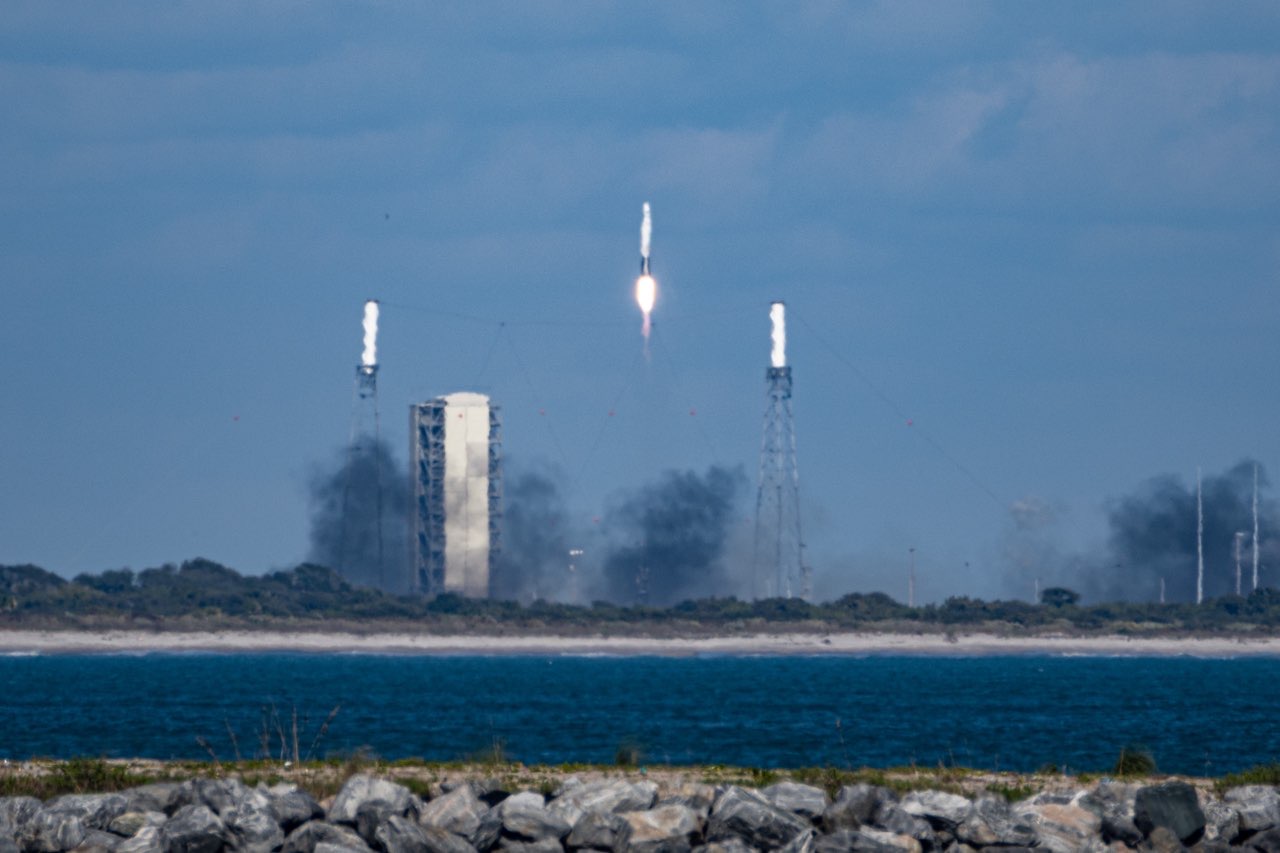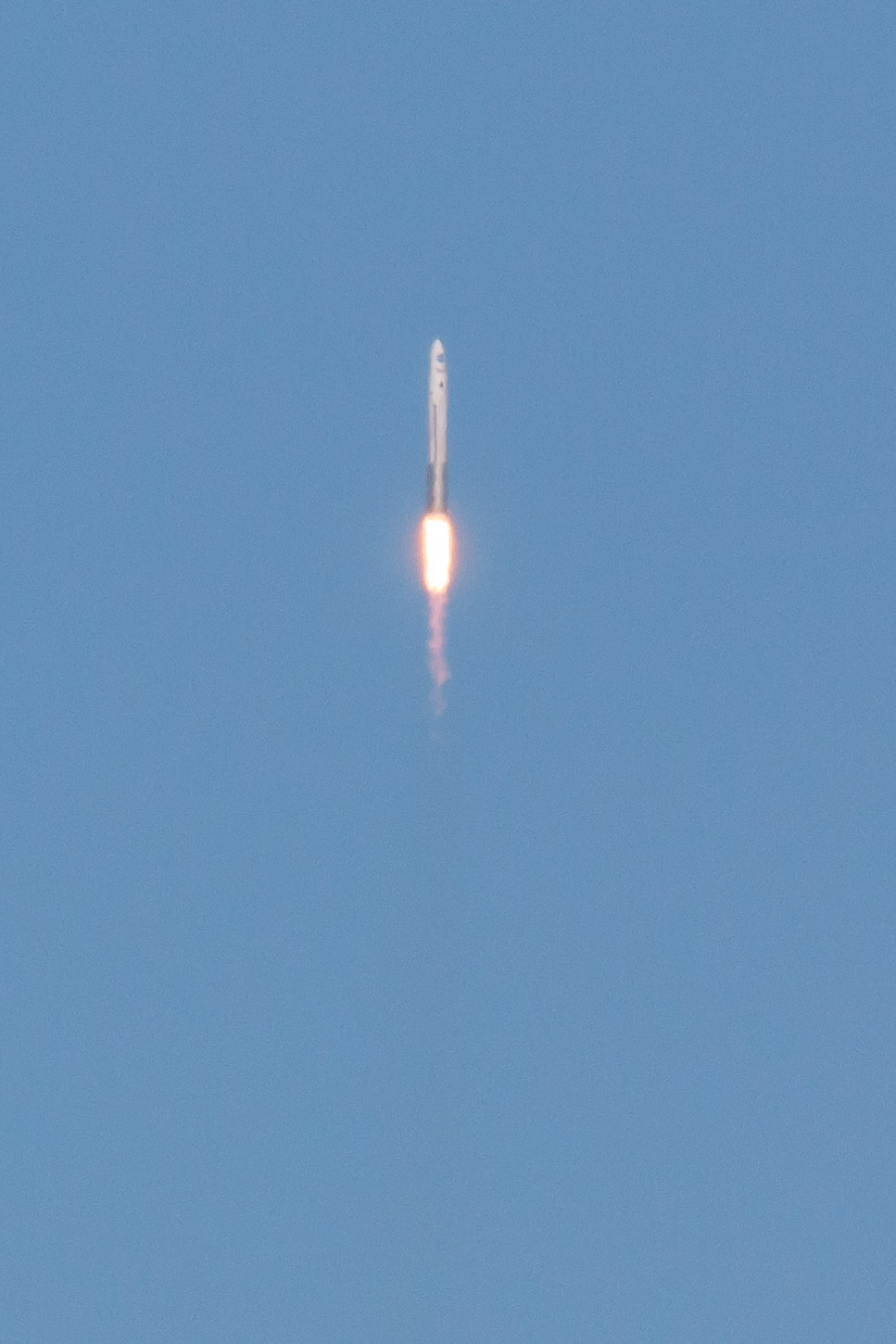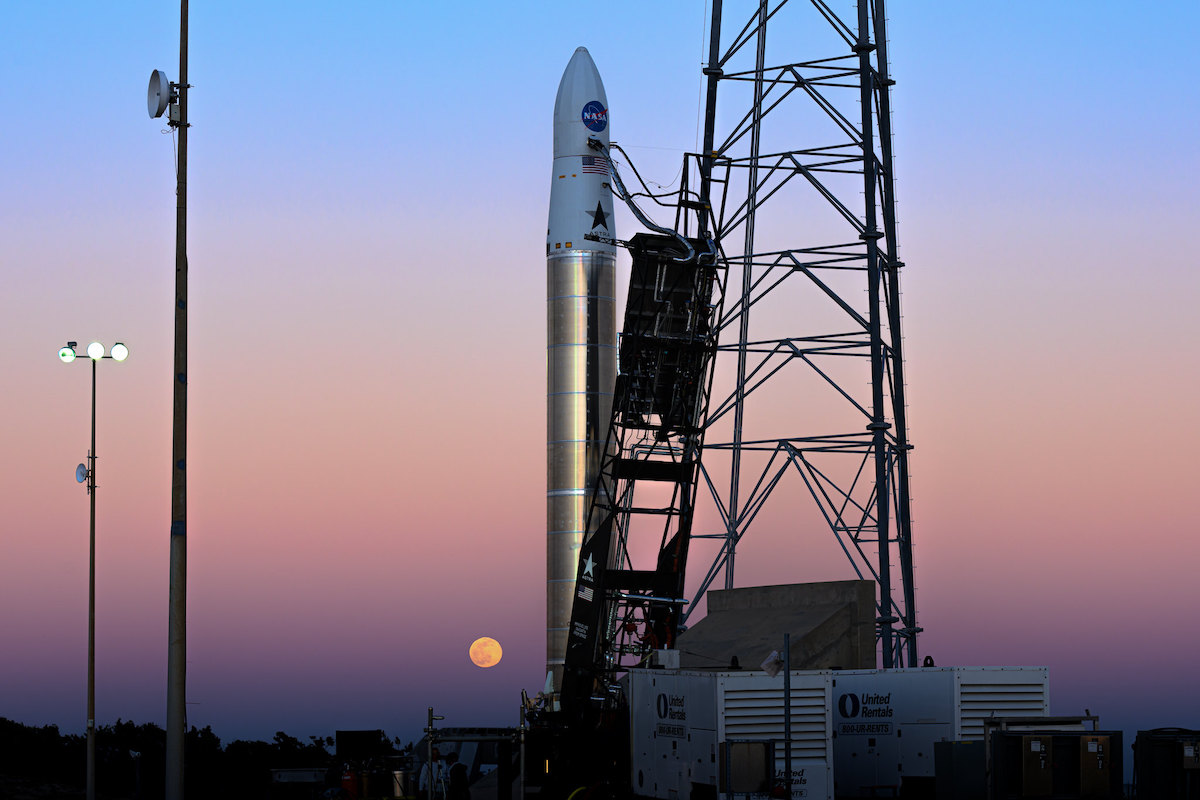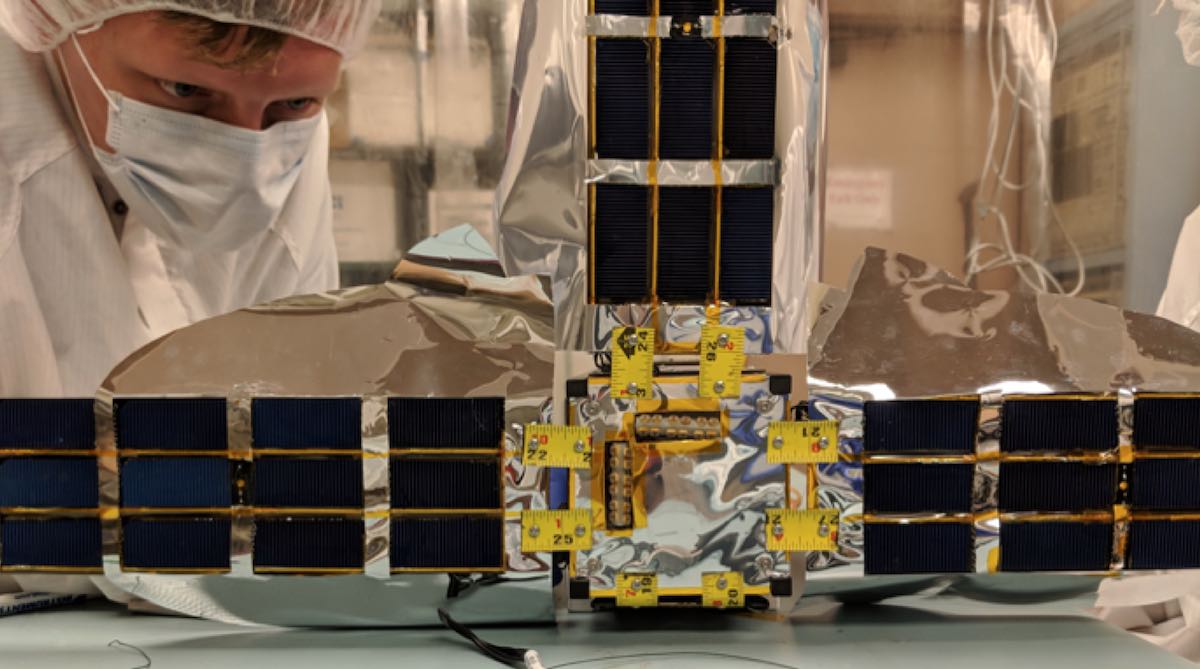
Four NASA-funded nanosatellites were lost Thursday when an Astra rocket tumbled out of control minutes after liftoff from Cape Canaveral, the fourth time in five tries that the startup space company has failed to reach orbit.
Astra’s 43-foot-tall (13.1-meter) launch vehicle, named Rocket 3.3, took off from Space Launch Complex 46 at Cape Canaveral Space Force Station at 3 p.m. EST (2000 GMT). The kerosene-fueled rocket flew downrange for nearly three minutes, heading over the Atlantic Ocean to place four CubeSats into orbit for NASA and university teams in three states.
But the mission went awry when the rockets second stage was supposed to separate from the first stage about three minutes into flight. On-board video beamed back to Earth showed the rocket’s five Delphin engines shutting down as planned. Moments later, the two halves of the rocket’s payload shroud were supposed to jettison, revealing Rocket 3.3’s upper stage and satellite deployers.
The rocket was then supposed to ignite its Aether upper stage engine to fire five-and-a-half minutes to place the CubeSats into orbit.
But the critical separation events did not appear to go according to plan. On-board video showed the fairing failed to fully jettison until after the second stage ignited. Moments later, an on-board camera showed the upper stage tumbling out of control more than 85 miles (140 kilometers) over the Atlantic.
Carolina Grossman, Astra’s director of product management, said on the company’s launch webcast that the rocket did not reach orbit.
“Unfortunately, we heard an issue has been experienced during flight that prevented the delivery of our customer payloads to orbit today,” Grossman said. “We are deeply sorry to our customers.”
Debris from the rocket and its payloads fell in the Atlantic northeast of Cape Canaveral.
The mission aimed to place the four CubeSats, each about the size of a toaster oven, into a 310-mile-high (500-kilometer) orbit at an inclination of 41 degrees to the equator. The launch was delayed from last month as Astra readied the rocket for liftoff. Launch attempts Saturday and Monday were scrubbed by a problem with a range radar and a latency issue with telemetry coming from the rocket.
The launch failure Thursday dealt a setback to Astra, which put a dummy payload into orbit for the first time in November. Three previous orbital launch attempts fell short of their objective, giving Astra a 1-for-5 record on orbital launch attempts to date.
Launch failures are common for new rockets, but Astra hoped the demo flight Thursday would help pave the way for more regular missions. Astra eventually targets a daily flight rate.
Astra declined to provide any more details on the launch failure Thursday. The mission was the company’s first to launch from Cape Canaveral, following previous test flights from Alaska. It was also Astra’s first launch to carry functional satellites into space.
Astra’s rocket is small in comparison to other launch vehicles that fly from Cape Canaveral. The Rocket 3.3 vehicle stands as tall as a four-story building and measures 52 inches (1.3 meters) in diameter. It’s five times shorter than SpaceX’s Falcon 9 rocket, and about the same height as the payload compartment on top of the Falcon 9.
The rocket is sized to haul payload of up to 110 pounds (50 kilograms) into a 310-mile-high (500-kilometer) orbit, according to Astra, one of numerous launch companies eyeing the growing small satellite market.
Astra confirms an issue in flight prevented delivery of four CubeSats into orbit for NASA, the University of Alabama, New Mexico State University, and UC-Berkeley.
Here’s a replay of the second stage tumbling at ignition.
📷: @Astra / @NASASpaceflight https://t.co/h8DFqMSi8q pic.twitter.com/iqOI5nLeKO
— Spaceflight Now (@SpaceflightNow) February 10, 2022
With Thursday’s flight, Astra’s rocket became be the smallest orbital-class launcher to ever take off from Cape Canaveral, and it is one of the smallest satellite launchers in the world.
Astra is one of numerous companies seeking to carve a niche in the rapidly growing small satellite launch market, offering relatively low-cost rides to orbit for commercial, military, and scientific spacecraft. The launch Thursday was a demonstration flight for NASA’s Venture Class Launch Services Program, which selected Astra for the test mission with a $3.9 million launch contract.
NASA said Astra will work with the Federal Aviation Administration on an investigation into the launch failure.
One of the CubeSats lost on Astra’s rocket Thursday was developed by students at New Mexico State University. Named INCA, the satellite will collect data on radiation in low Earth orbit.
Another small spacecraft, named QubeSat, came from the University of California, Berkeley, and was to test new miniature gyroscope technologies. The BAMA 1 mission, developed at the University of Alabama, was designed to demonstrate a drag sail device designed to help old satellites and space junk drop out of orbit.

The final payload was a CubeSat named R5-S1 from NASA’s Johnson Space Center in Houston. NASA said the mission’s objectives included demonstrating rapid CubeSat development and testing technologies useful for in-space inspection, which could make human spaceflight safer and more efficient.
“Missions like these are critical for developing new launch vehicles in this growing commercial sector,” said Hamilton Fernandez, mission manager with NASA’s Launch Services Program. “The Astra team demonstrated dedication to supporting NASA’s mission. The lessons learned will benefit them and the agency going forward.”
NASA previously awarded VCLS demonstration missions to Rocket Lab and Virgin Orbit, which successfully completed their first launches for the U.S. space agency in 2018 and 2021. NASA announced a new round of VCLS contracts in 2020 for Astra, Firefly Aerospace, and Relativity Space.
The VCLS missions give NASA insight into companies’ management and technical teams, procedures and processes, and their hardware designs.

The VCLS demo missions are also a stepping stone toward certification of the new smallsat launchers to carry more expensive NASA satellites into orbit. The certification isn’t required for the demo missions themselves.
L2 Solutions and Spaceflight are launch brokers, acting as agents matching satellites with a wide range of rockets. The other VADR providers are currently flying or developing rockets of various sizes, capable of launching small satellites on dedicated missions or on rideshare launches.
Before Thursday’s failure, Astra’s next mission was scheduled to launch from Alaska this spring. It was not immediately clear how the failure might affect the timetable for that mission.
Trading of Astra shares was temporarily halted after the stock price plunged following the the failure Thursday.

Astra was founded in 2016 by Chris Kemp and Adam London. Kemp, a founder of several previous tech startups, is Astra’s CEO. London is an aerospace engineer with a Ph.D from MIT. The company’s headquarters in Alameda, California, serves as Astra’s launch control center, factory, and engine test site.
The launch failure came a day after the filing of a lawsuit on behalf of investors against Kemp and Kelyn Brannon, Astra’s chief financial officer, alleging violations of securities laws. Astra said it believes the “claims are without merit” and “will vigorously defend against these claims.”
Astra went public last year in a merger with a special purpose acquisition company, a strategy used by many other space companies hoping to capture funding and raise their value on the stock market.
Email the author.
Follow Stephen Clark on Twitter: @StephenClark1.
